27.01.2024
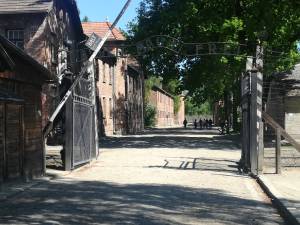
Soviet Red Army troops liberated Auschwitz concentration camp and its 7,000 surviving inmates on January 27, 1945. This date was chosen as International Holocaust Remembrance Day to commemorate the victims of the Holocaust.
Death camps
The use of concentration and death camps is one of the characteristic features of the Holocaust. Hundreds of camps were established in Europe, but six of them were particularly deadly: Chełmno, Bełżec, Sobibór, Treblinka, Majdanek, and Auschwitz (Oświęcim).
Auschwitz is of particular importance among these. Of course, more people were killed in Bełżec, Sobibór, and Treblinka combined than in Auschwitz itself. But Auschwitz was larger in size, in administrative structure and staff and in the symbolic meaning it holds for the Holocaust.
Chełmno, Bełżec, Sobibór, Treblinka, and Majdanek were built exclusively for mass murder purposes. Auschwitz was, however, both a true extermination factory and a labour camp, where thousands of prisoners were used as forced labour.
Creation of the Camp
The site of Auschwitz was chosen due to its proximity to the major industrial and cultural centre of Kraków, a city that the Nazis wanted to make the capital of eastern Europe. Apart from that, Kraków was an important transportation hub, from where railway lines stretched across Europe and could easily supply raw materials to the industrial camps, as well as bringing hundreds of thousands of Jews from various European countries to Auschwitz.
The former Polish army barrack complex near Auschwitz village began to be adapted for the imprisonment of Polish opponents of the Nazi regime from May 1940 onwards. Later, people of other nationalities were brought there: prisoners of war, political and ideological opponents of the Nazis, captured resistance fighters and disabled people.
It gradually became a death centre for European Jews during 1942. Thousands of people were suffocated there on a dailybasis through the use of a crystalline gas called Zyklon B. A new camp called Birkenau was constructed a few kilometers from Auschwitz in spring 1942.
Transportation by train
Trains began to transport Jews from Western and Central Europe to Auschwitz from June 1942 onward. This terrible process was quickly completed in Holland, but the Belgian and French governments tried to limit extradition to foreign Jews and, if possible, to spare their own citizens from being sent to Auschwitz. Among the first victims were Polish Jews, as well as those of Bohemia, Moravia and Slovakia. Many German Jews, especially the elderly, were initially sent to the Theresienstadt propaganda camp established in the city of Terezín. The living conditions there were satisfactory; it was created as comfortable long-term residence for displaced Jews to show international organizations and the media that the Jews were not in any danger after their relocation. These Jews were, sometime later, also sent to Auschwitz. Trains arrived in Auschwitz throughout 1943, containing Greek and - from the autumn of that year - Italian Jews. Later, in 1944, 430,000 Hungarian Jews suffered the same fate.
It should be noted that the transportation was carried out using cattle trains and the journeys could last for several days, during which people in the overloaded waggons died of hunger and thirst.
Selection and redistribution
Only 10% to 35% of those who reached the camp were selected for forced labour.
The selection was made by Nazi doctors on the railway station platform. Perhaps the most famous of them was Josef Mengele, nicknamed the "Angel of Death". He chose where the prisoner would go. If the prisoner was considered healthy and fit for work, he was sent to the camp. The gas chamber awaited the others.
It should be remembered that this examination was carried out in a very superficial way. The Nazis did not feel that they lacked a labour force; trains arrived with more Jews every day. Mengele and the other doctors weren’t too concerned about the accuracy of their inspections.
Camp life
Those who were assigned to forced labour were deprived of all their possessions. Even their names were deleted, replaced by serial numbers tattooed on the hand. Prisoners shaved their hair, wore similar uniforms and worn or wooden shoes. Their living conditions were terrible. Doing hard physical work, they had to live in conditions of extreme hunger and cold, sleeping 3-15 people on a bunk bed and deprived of basic hygiene facilities.
Their daily routine included morning and evening rollcalls, often lasting for hours, with the constant threat of punishment and torture.
Human experiments were also carried out in Auschwitz. The same Mengele, interested in the study of twins, genetics and issues related to reproduction, brutally tortured his victims. His cruelty was demonstarted when he shot, with his own hands, Gypsies and Hungarian Jewish children chosen for his experiments.
Death in the gas chambers
Those sentenced to death were separated immediately after their arrival and went to the gas chambers straight away. Children, the elderly, and the sick had no chance of survival because they were not considered to be suitable for the labour force.
This haste was due to the desire to hide the killing process from the victims as much as possible. They were escorted to dressing rooms, where they were instructed to leave their clothes as if for disinfection, after which they were taken to the bathroom under the pretext of taking a shower. However, when the large metal doors of the shower room were closed, Zyklon B instead of water was poured into the rooms through the flue system.
The victims suffocated within 15-20 minutes, after which the bodies were taken to the crematorium, the smoke from which constantly reminded the camp inmates of their inevitable fate.
The gas chamber was then quickly tidied up by special groups of Jewish prisoners, the Sonderkommando units and was then ready to receive the next victims.
The victims
Most Holocaust scholars agree that approximately 1.1 million Jews were killed in the Auschwitz camps. It should be noted that the numbers are approximate, as only those who were selected for forced labour were recorded. The victims sent to the gas chamber were not counted.
The number of Jews who died in Nazi camps during the Holocaust exceeded three million in total.
It should be stated, of course, that only half the Holocaust victims ended up in concentration camps. Others were shot and/or died in ghettos. One of the peculiarities of the Holocaust was, however, the implementation of this method of extermination, and the first image that comes to mind when mentioning the word Holocaust is that of the Auschwitz gates.
The picture shows the entrance to Auschwitz. Photograph by Suren Manukyan.
Suren Manukyan, Ph.D. (History)
Head of the AGMI Vahakn Dadrian Department of Comparative Genocide Studies
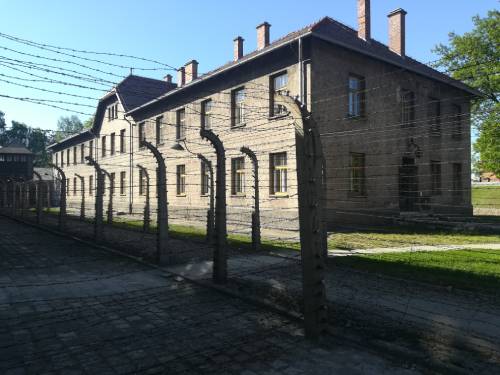
The buildings housing Auschwitz prisoners
Photograph by Suren Manukyan
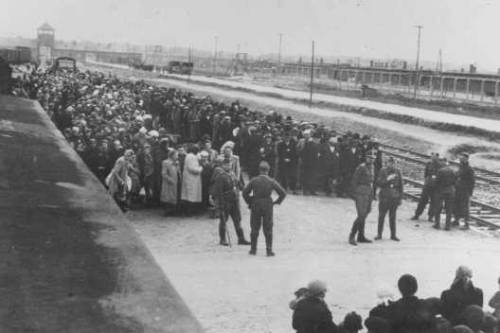
Arrival of Hungarian Jews
Yad Vashem Museum Archives
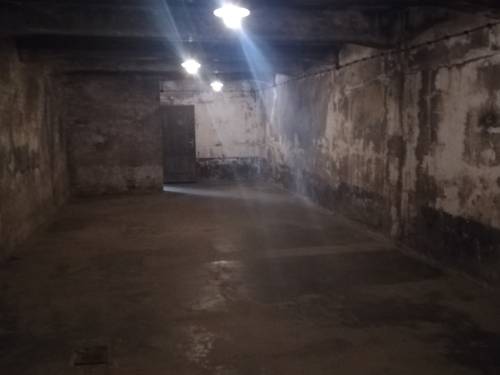
The Auschwitz gas chamber
Photograph by Suren Manukyan
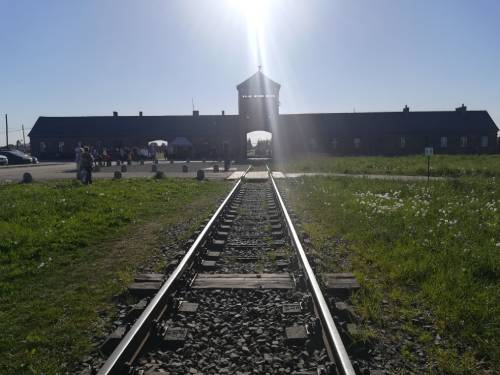
The gates of Auschwitz II–Birkenau
Photograph by Suren Manukyan
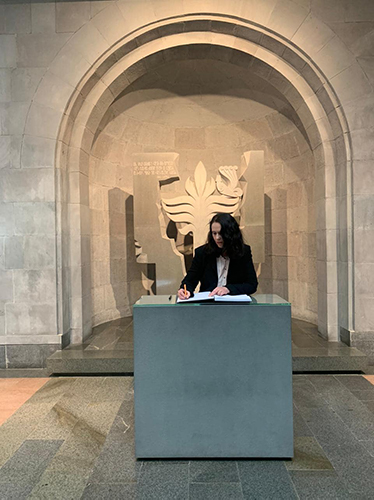
The buildings housing prisoners of Auschwitz II–Birkenau
Photograph by Suren Manukyan

Map showing the transfer routes of Jews to Auschwitz
Photograph by Suren Manukyan
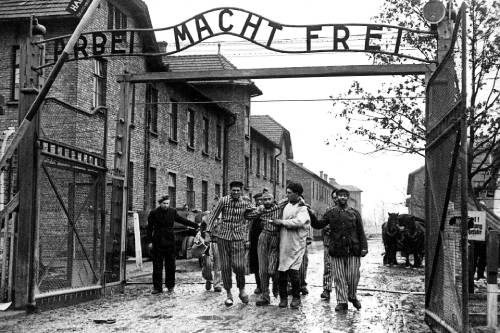
Liberation of Auschwitz by Soviet troops





